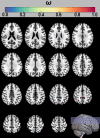Structural brain alterations in patients with anxious depression: evidence from the REST-meta-MDD project
- PMID: 40787685
- PMCID: PMC12332750
- DOI: 10.3389/fpsyt.2025.1589040
Structural brain alterations in patients with anxious depression: evidence from the REST-meta-MDD project
Abstract
Background: Anxious depression (AD) is a clinically significant subtype of major depressive disorder (MDD) characterized by prominent anxiety symptoms. Emerging neuroimaging evidence shows that AD patients have significantly altered brain structure. This study aimed to identify reliable neuroimaging biomarkers for AD in a Chinese cohort.
Methods: Participants were recruited from the REST-meta-MDD project, including 178 MDD patients and 89 healthy controls. MDD patients were stratified into 89 patients with AD and 89 with non-anxious depression (NAD). Voxel-based morphometry (VBM) was used to quantify gray matter volume (GMV) using T1-weighted images. Depressive and anxiety symptoms were assessed using the Hamilton Depression Rating Scale (HAMD-17) and the Hamilton Anxiety Rating Scale (HAMA-14). Structural covariance (SC) analysis was employed to investigate coordinated morphological changes across brain regions. Additionally, a support vector regression (SVR) model was constructed to predict anxiety severity in MDD patients, with external validation performed in an independent dataset.
Results: In AD patients, significant increases in GMV were observed in the right precuneus (PCUN) and right superior parietal gyrus (SPG). Reduced SC was also found between the right PCUN and left anterior cingulate gyrus (ACG), as well as between the right PCUN and right angular gyrus (ANG). Additionally, SVR analysis demonstrated that the right PCUN GMV could effectively predict MDD patients' HAMA-14 scores (r = 0.477, MSE = 73.865), validated in an independent external dataset (r = 0.368, MSE = 100.961).
Conclusions: This study's findings indicate that brain structural abnormalities may be a crucial pathophysiological basis for AD.
Keywords: anxious depression; gray matter volume; major depressive disorder; structural covariance; support vector regression.
Copyright © 2025 Hu, Zhu and Zhang.
Conflict of interest statement
The authors declare that the research was conducted in the absence of any commercial or financial relationships that could be construed as a potential conflict of interest.
Figures




Similar articles
-
Characteristics of Cerebral Cortical Structural Alterations in Female Patients with Systemic Lupus Erythematosus Without Major Neuropsychiatric Manifestations Accompanied by Anxiety and Depression.J Integr Neurosci. 2025 Jun 24;24(6):36382. doi: 10.31083/JIN36382. J Integr Neurosci. 2025. PMID: 40613368
-
Omega-3 fatty acids for depression in adults.Cochrane Database Syst Rev. 2015 Nov 5;2015(11):CD004692. doi: 10.1002/14651858.CD004692.pub4. Cochrane Database Syst Rev. 2015. Update in: Cochrane Database Syst Rev. 2021 Nov 24;11:CD004692. doi: 10.1002/14651858.CD004692.pub5. PMID: 26537796 Free PMC article. Updated.
-
Voxel- and surface-based morphometry in the cortical thickness and cortical and subcortical gray matter volume in patients with mild-to-moderate Alzheimer's disease.Front Aging Neurosci. 2025 Jun 25;17:1546977. doi: 10.3389/fnagi.2025.1546977. eCollection 2025. Front Aging Neurosci. 2025. PMID: 40636899 Free PMC article.
-
Omega-3 fatty acids for depression in adults.Cochrane Database Syst Rev. 2021 Nov 24;11(11):CD004692. doi: 10.1002/14651858.CD004692.pub5. Cochrane Database Syst Rev. 2021. PMID: 34817851 Free PMC article.
-
Resolving heterogeneity in first-episode and drug-naive major depressive disorder based on individualized structural covariance network: evidence from the REST-meta-MDD consortium.Psychol Med. 2025 Jun 24;55:e174. doi: 10.1017/S0033291725100664. Psychol Med. 2025. PMID: 40550749 Free PMC article.
References
LinkOut - more resources
Full Text Sources
Miscellaneous

